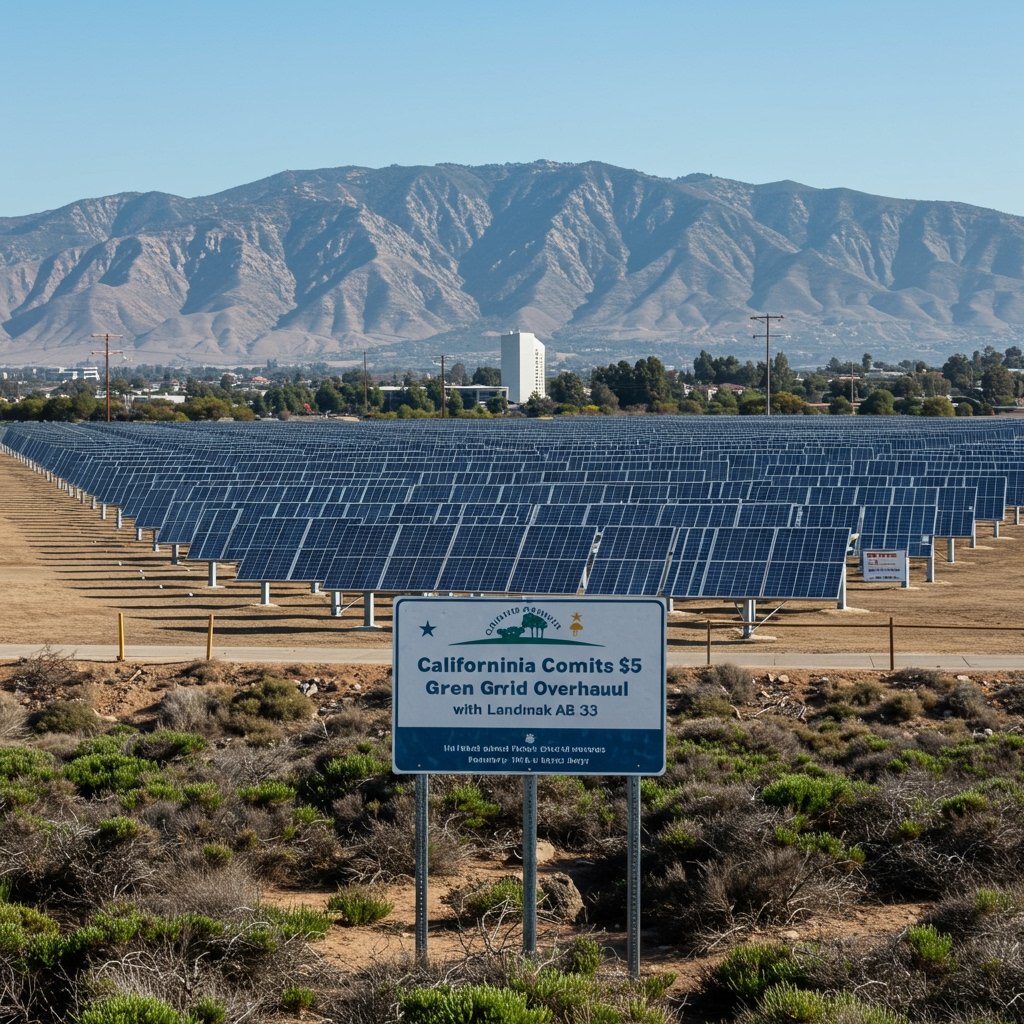California Finalizes Historic Assembly Bill 33 on Statewide Grid Modernization
Sacramento, California – In a move signaling a profound commitment to its ambitious climate objectives and energy future, Governor Gavin Newsom officially signed Assembly Bill 33 into law on May 15, 2025. This pivotal legislation represents a significant step in California’s ongoing efforts to modernize its power infrastructure, enhance reliability, and accelerate the integration of renewable energy sources across the state.
Assembly Bill 33, now law, allocates a substantial $5 billion in funding over the next five years. This considerable investment is earmarked for critical advancements in statewide energy infrastructure, specifically targeting advanced energy storage projects and essential upgrades to the power transmission network. The legislation’s focus is strategically aligned with the state’s renewable energy goals, particularly addressing the challenge of bringing clean energy generated in remote locations, such as the vast solar farms of the Mojave Desert and emerging offshore wind farms, to population centers.
The core intent of AB 33 is to build a more resilient and reliable grid capable of handling the variability inherent in renewable sources. Energy storage, like large-scale battery installations, is crucial for capturing excess renewable power when it is abundant (e.g., sunny afternoons) and discharging it when demand is high or generation is low (e.g., evenings). Simultaneously, upgrading transmission infrastructure is necessary to physically move this clean energy from often distant generation sites to where it is consumed.
Mandates and Deadlines Set for Rapid Progress
A key provision within AB 33 establishes stringent requirements for the pace of implementation. The law mandates that 75% of the newly funded storage capacity must be fully operational by a firm deadline of December 31, 2029. This aggressive target underscores the state’s urgency in deploying the tools needed to stabilize the grid. According to statements from the California Energy Commission, this requirement is specifically designed to bolster grid resilience and help prevent the type of blackouts that have impacted California in recent years, particularly during periods of peak demand or extreme weather events intensified by climate change.
The legislation recognizes that successfully implementing such a large-scale infrastructure overhaul requires coordinated efforts from the state’s major utility providers. As such, Assembly Bill 33 places specific requirements on utilities, including PG&E, SCE (Southern California Edison), and SDG&E (San Diego Gas & Electric). These companies are now mandated to submit their initial implementation plans detailing how they will contribute to meeting the bill’s objectives, specifically by November 1, 2025.
Addressing California’s Energy Challenges
California has been at the forefront of renewable energy adoption, setting ambitious targets for decarbonization. However, integrating high levels of intermittent renewables like solar and wind presents significant challenges to grid stability. Traditional grids were built around dispatchable power sources like natural gas or coal, which can be turned on or off as needed. Renewables, dependent on weather conditions, require sophisticated management, storage, and robust transmission to ensure continuous power supply.
Extreme weather events, from heatwaves stressing the grid with high air conditioning demand to wildfires threatening transmission lines, further complicate grid management. AB 33’s focus on energy storage and transmission upgrades directly addresses these vulnerabilities, aiming to create a more flexible and hardened system capable of withstanding future climate impacts.
The $5 billion investment signals a recognition that incremental changes are insufficient to meet the scale of the challenge. It represents a strategic capital infusion intended to accelerate the deployment of proven technologies (storage) and necessary physical infrastructure (transmission) that form the backbone of a modern, clean energy grid.
The Path Forward
The requirement for utility companies to submit initial plans by November 1, 2025, marks the critical next phase of AB 33’s implementation. These plans are expected to outline specific projects, timelines, and strategies for deploying storage assets and upgrading transmission lines within their service territories. The California Energy Commission, likely in coordination with other state agencies, will play a crucial role in reviewing these plans and overseeing the execution of the projects funded by AB 33.
The December 31, 2029, deadline for 75% operational storage capacity provides a clear benchmark for measuring progress and ensures accountability. Meeting this target will require rapid planning, permitting, construction, and interconnection of large-scale storage facilities across the state.
Assembly Bill 33 is being hailed by proponents as a transformative piece of legislation that moves California closer to achieving its clean energy and climate goals while simultaneously enhancing grid reliability for its residents and businesses. The $5 billion commitment over five years lays the financial groundwork, and the specified mandates and deadlines set a clear trajectory for California’s energy future, particularly in leveraging remote renewable resources like those from the Mojave Desert and offshore wind farms.
As utilities develop their strategies and state agencies prepare for oversight, the focus will shift to the practical challenges and opportunities of deploying this historic investment to build the resilient, clean energy grid of tomorrow. The coming years will be critical in demonstrating the effectiveness of AB 33 in achieving its ambitious aims.








